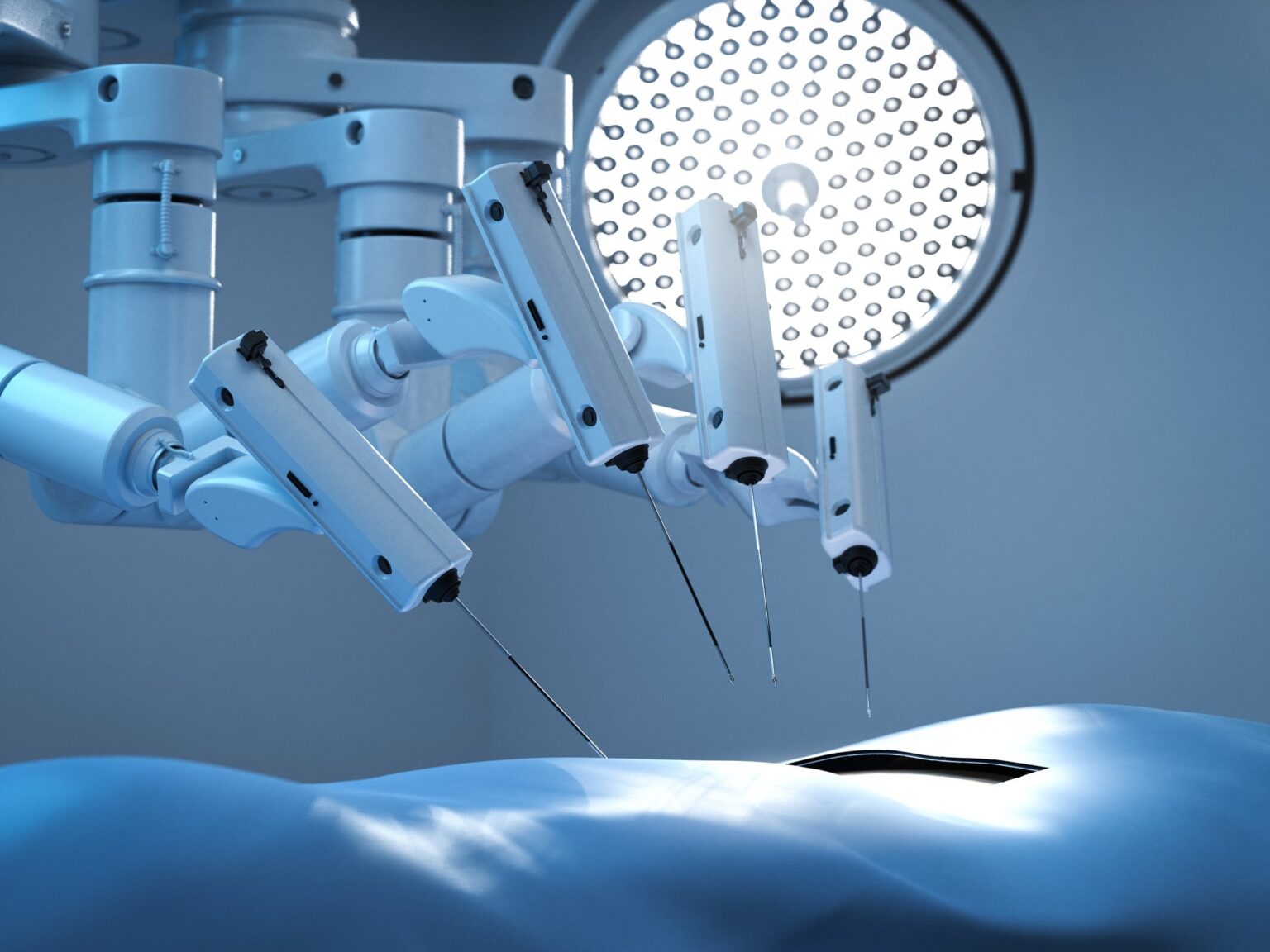Robotics in surgery has emerged as a transformative technology, offering enhanced precision, efficiency, and improved patient outcomes in the operating room. Here are some key aspects of robotics in surgery:
- Surgical Precision: Robotic systems provide surgeons with enhanced precision and dexterity. These systems often use small, articulated robotic arms that can mimic the movements of the surgeon’s hands with greater precision and a wider range of motion. This enables surgeons to perform complex procedures with improved accuracy, particularly in delicate and hard-to-reach areas of the body.
- Minimally Invasive Surgery: Robotics has facilitated the growth of minimally invasive surgery (MIS). With the use of robotic-assisted systems, surgeons can perform procedures through small incisions, reducing trauma to surrounding tissues, minimizing scarring, and promoting faster recovery times for patients. Robotic systems can stabilize and filter hand tremors, further enhancing the precision required for MIS.
- Improved Visualization: Robotic surgery often incorporates high-definition 3D imaging systems, providing surgeons with a detailed, magnified view of the surgical site. This enhanced visualization allows for better identification of structures, improved depth perception, and a more comprehensive understanding of the anatomy. Consequently, surgeons can make more informed decisions during the procedure.
- Teleoperation and Remote Surgery: Robotic systems can enable teleoperation, where a surgeon can perform a procedure remotely using robotic arms. This capability has the potential to extend surgical expertise to remote or underserved areas, allowing patients to access specialized care without the need for long-distance travel. Additionally, in emergency situations, remote surgery can provide immediate assistance by connecting surgeons to distant locations.
- Ergonomics and Surgeon Fatigue Reduction: Robotic systems are designed with ergonomics in mind, allowing surgeons to operate comfortably for extended periods. The robotic arms filter out hand tremors and provide greater stability, reducing surgeon fatigue and hand tremor-related errors. This can be particularly beneficial during lengthy and complex procedures.
- Surgical Training and Education: Robotics in surgery offers a valuable tool for surgical training and education. Trainee surgeons can use robotic systems to develop their skills in a controlled and supervised environment. Virtual reality (VR) and augmented reality (AR) technologies, integrated with robotic platforms, can provide realistic simulations of surgical procedures, enabling trainees to gain practical experience before operating on real patients.
- Data and Analytics: Robotic systems often collect and analyze data during surgical procedures, such as instrument movements and vital signs. This data can be leveraged to identify trends, optimize surgical techniques, and improve patient outcomes over time. Robotic surgery also contributes to the growing field of surgical robotics research, fostering innovation and advancements in surgical techniques.
While robotics in surgery offers numerous benefits, there are still considerations to address, such as the cost of implementing and maintaining robotic systems, the learning curve for surgeons, and the need for specialized training. Additionally, ethical considerations, patient safety, and regulatory frameworks are essential to ensure the responsible integration of robotics into surgical practice.
Overall, robotics in surgery holds significant promise for precision, efficiency, and improved patient care in the operating room. As technology continues to advance, we can expect further refinements and expanded applications, driving the future of surgical innovation.



